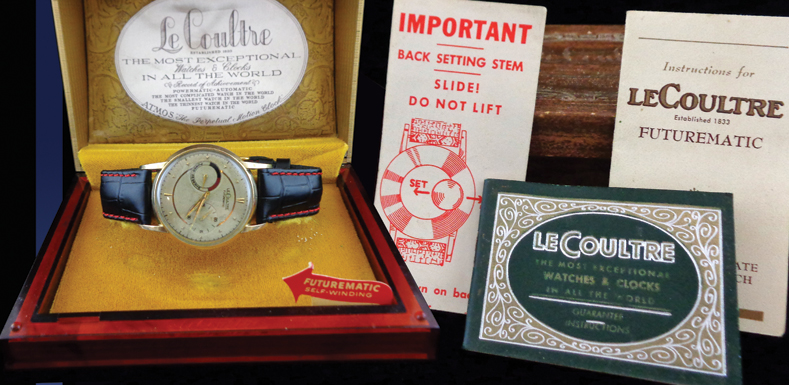The vintage watch market offers a variety of beautiful watches at more affordable prices.
Many people believe that collecting vintage watches is an ultra-luxurious hobby. Yes, it’s true that vintage watches are currently going through a glamorous time with prestigious auction houses hosting high-profile events littered with celebrity watches, rare timepieces, and never-before-seen unique models.
It’s also true that watch media outlets focus on particular models like the Rolex Daytona “Paul Newman” or the vintage Heuer Autavia, thereby placing these particular vintage watches on unapproachable pedestals. That, coupled with the successful millennium-set clamoring to get their hands on a Rolex Submariner 5513, GMT-Master or a Patek Philippe Nautilus, and it seems that only select brands are enjoying the limelight in the vintage market—and as a result, come with bloated price tags.
As a direct consequence of the vastly unaffordable prices of certain brands in the vintage watch market, some collectors and enthusiasts look to other brands. What these other brands may lack in prestige and popularity, they make up for in appealing aesthetics and solid movements.
In my forty years of collecting vintage and contemporary watches, I have observed trends and fluctuations in price, size, and designs. Today, you have tremendous opportunities to buy affordable watches in the $1,500 - $2,500 price range. Not only do these watches offer great looks and decent calibers, they can also present good investment opportunities.
I classify brands into four levels. There’s the most exclusive tier with brands like Patek Philippe. Then there’s the luxury tier with brands like Audemars Piguet. Furthermore, there’s the upper-level tier with brands like Breitling. And finally, there’s the middle tier with brands like Baume & Mercier. Today I will discuss watches that sit in the lower price range of the upper-level tier.
The $1,500 - $2,500 Price Range
While there are dozens and dozens of brands I could discuss, I have selected less than twenty of them to highlight here. These are brands that I have personally owned or worked with as a watch dealer. They are brands that offer a great package of name recognition, design, functionality, movement, and they are increasingly becoming more popular.
For example, I have noticed an increased demand for Croton and Nivada Grenchen watches. Moreover, for watches that offer more functionality beyond timekeeping, there’s the Vulcain Cricket, the Universal Genève Polerouter and the Lip Nautic Ski.
For military style watches, BMC, Airain, and Omega have some fantastic options. On the other hand, for handsome timepieces with beautiful dials, there are plenty of choices from Vetta or Eberhard—particularly those watches with snail and/or mono pusher.
Brands that are currently undervalued yet emerging due to a solid appreciation from collectors are Movado and Oris, while other names I’m hearing more frequently talked about in the market include Gallet, Angelus, Favre Leuba, Girard-Perregaux and Heuer.
Some of my personal favorite affordable brands are Universal, Vulcain, Wakmann, LeCoultre, Minerva, Lip, Zenith and Movado. However, the brand that has the most to offer is Omega—they are excellent quality watches that are very reliable, beautifully designed, and continue to hold or appreciate in value over time.
Movements
Aside from brand names, another element that impacts the perceived value of a vintage watch is the type of movement that powers the watch.
Famous movement brands include Valjoux, Venus (of Breitling fame), and Landeron. Typically, brands that run on Valjoux movements retain their value well since they are coveted by collectors, while Landeron calibers were often destined for less expensive models. Within the same brand, some calibers are more sought after than others. Take for example the iconic Valjoux 72 compared to the lesser-known Valjoux 7733 of the Vulcain Panda.
The function of the watch is an important parameter right now too. People tend to favor GMT, anti-magnetic, alarm, or chronograph vintage watches. Also, since the majority of watches from the 1960s were usually smaller in size, about 33-34mm, larger ones from the same period are much more in demand to suit contemporary tastes. As always, there’s a strong demand for military-style vintage watches too, with brands like Airain and Omega standing out.
How to Buy
As with anything, when buying a vintage watch, there are a few key principles to follow to optimize your purchase. The first and more important point to keep in mind is, of course, the authenticity and originality of the watch. Does it have the right movement with the right case? Is the dial in original untouched condition with the correct hands and lume? Does the case include the original crown?
Once the authenticity and honesty of the parts have been verified, it’s time to inspect the overall condition of the watch. But given the nature of vintage watches, it’s often a tradeoff between condition and original parts. Value-wise, it’s always better to opt for a watch with all original parts in less than stellar condition than a watch in mint condition with replacement parts. There are plenty collectors out there who want a vintage watch to look as new as it did the day it came out of the store—a difficult task indeed. There are some watches referred to as “New Old Stock,” but unless it stayed in a dry and dark drawer for five decades, a watch rarely lives up to this somewhat misleading label.
Then comes the common question of polished or not polished? There are many serious watch collectors who do not want polished watches. I personally do not polish watches unless it’s a contemporary piece. I’ve witnessed watches losing over $10,000 in value just because the lugs weren’t polished properly. Make no mistake, polishing a watch takes great skill and your precious vintage watches should only be trusted to properly trained professionals that are up to the task.
Another component to pay close attention to is the dial of the watch, especially the lume. Radium vs. tritium, untouched vs. re-lumed, the color of the patina, and so on, are just a few things to consider. Collectors today are sensitive to the type of luminescent material on the watch as it plays a big part in the final price.
Provenance
Last, but certainly not least, is the importance of the provenance of the watch. As expected, a one-owner vintage watch will command higher prices than a multi-owner watch. Service history of the watch also plays a part here, where work done by certified watchmakers from brands like Omega or Breitling or CW21-certified watchmakers enhance the credentials of the watch, thus driving up the value of the piece in question.
Original boxes and papers add about ten percent to fifteen percent of value to the watch– and I always appreciate a full set. For example, a LeCoultre Futurematic bought in 1954 and kept by the same person, serviced by an Omega certified watchmaker, and sold as a full complete set with packaging and papers is a great purchase in the vintage market. While its price may sit under $2,500, it’s a collectible piece because of its provenance and accompanying accessories.
To conclude, under the shadows of million-dollar watches, the vintage watch market does offer a large variety of beautiful watches at more affordable prices. You just have to be willing to do your homework, be disciplined, and above all else, be patient. Eventually, you’ll find that perfect vintage watch that speaks to your taste and falls right into your budget range.










